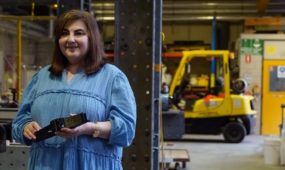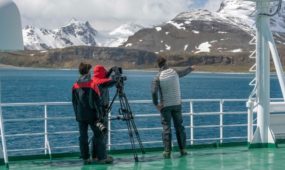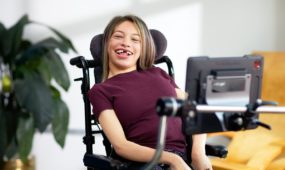Space is the final frontier for Andrea
Technology
ANDREA Boyd is living her dream. The 31-year-old is the only Australian working in the International Space Station Flight Control worldwide.

Sign up to receive notifications about new stories in this category.
Thank you for subscribing to story notifications.
Growing up in Adelaide, South Australia, Boyd used to watch the television program Star Trek: Voyager religiously and adored the character of B'elanna Torres, who was the Chief Engineer on the show.
“I loved it,” says Boyd. “I looked at her and I thought ‘I’m going to do that one day, I’m going to make everything electrical and mechanical work in space.”
Now, she does. For the past four years, Boyd has worked as an International Space Station Flight Operations Engineer at the European Space Agency – Europe’s gateway to space.
If you’ve ever seen the film Apollo 13, you probably remember the line “Houston, we have a problem.” Boyd is that person the “Houston”. In fact, she is EuroCom.
“They only ever say ‘Houston’ in the movies,” Boyd says.
“In reality, there are five mission control centres: two in the United States, one in Europe, one in Russia and one in Japan.”
At each of the mission controls, only one person is allowed to talk to the astronauts in space.
“I’m the one that talks back to space when the astronauts are conducting their experiments,” says Boyd.
A regular day for Boyd involves working an eight-hour shift and making sure everything goes smoothly for the team in space. Each day and each task the astronauts carry out is highly planned and scheduled.
“I need to have a broad overview of all experiments,” says Boyd.
This is not an easy task. There are four different science laboratories operating on the International Space Station. That means there are usually a few hundred experiments happening at any one time. Sometimes they are “basic” science experiments involving different materials and physics. Sometimes they are biological and medical tests.
Every six months, the astronauts receive a new set of experiments and every three months, there is a different combination of astronauts to work with.
“Day to day it’s not the easiest thing to do,” says Boyd.
“But I love it. I wouldn’t have it any other way. I work in a really dynamic environment.”
AIMING HIGH IN ADELAIDE
It wasn’t just Star Trek that inspired Boyd’s passion for space. The International Space Station was being built while Boyd was in primary school in South Australia. She knew then that she wanted to work on it, and engineering was her ticket to her dream job.
“When I was seven I found out about an after-school science club called Double Helix, run by Australia’s national science agency CSIRO. I went every week for years,” says Boyd.
Later, she discovered a holiday program for school students called the South Australian Space School. Boyd fondly remembers the time a “real astronaut” came for a visit.
Boyd always knew she wanted to work overseas. She went on her first student exchange to Italy when she was just 15 years old. After finishing high school she took a job in Russia, teaching sports at a summer camp. Little did Boyd know, that this experience with the Russian language, would come in handy later in life. Only two languages are spoken on the International Space Station: English and Russian.
SPACE OBSESSED
It was a Mechatronic Engineering degree at the University of Adelaide that tempted Boyd back to South Australia.
Throughout university space remained firmly in Boyd’s sights.
She travelled to Austria for work experience at the European Space Policy Institute; volunteered every year at space conferences in Australia and built a ramjet (supersonic jet engine) for her final year engineering project.
GIVING BACK
Boyd is passionate about making space science and engineering more accessible for young people and the wider public.
In 2010, she co-founded the Aerospace Futures event, a three-day conference for university students who harbour the same space dreams as she did. Boyd also created a United Nations space internship in Vienna which is now an annual paid opportunity for students.
Next year, Boyd’s home town of Adelaide will play host to the International Astronautical Conference (IAC). Boyd was part of the International Engagement bid team that secured the Australian city as the host.
Winning the bid took almost five years of work and the Adelaide team was competing against major cities in the United States, Ireland and Turkey for the event.
“It’s like winning the Olympics of the space world,” says Boyd. “Several thousand space scientists and engineers, as well as space agencies and companies will attend the conference. It’s really exciting” says Boyd.
BEYOND SPACE
Boyd has, until this point, been hurtling through her career. For now though, she is satisfied (and thrilled) to be working at the European Space Agency. And she is making the most of it while she can – the International Space Station is expected to be in space for only another eight years, before it is decommissioned because of its age.
“I want to enjoy it and work on it until the end, ” says Boyd.
As for a desire to be an astronaut herself, Boyd says she’ll leave that job to her “superhuman” colleagues. She does, however like the idea of being a participant on a shorter space flight one day. It seems, this high achiever, will never stop shooting for the moon.
Jump to next article



